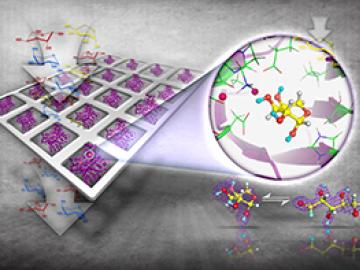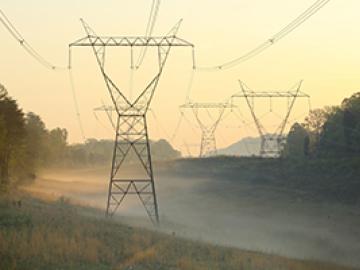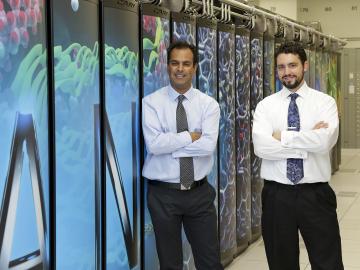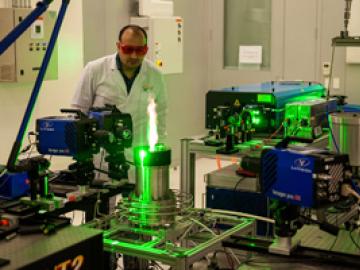Filter News
Area of Research
- Advanced Manufacturing (2)
- Biology and Soft Matter (2)
- Building Technologies (2)
- Chemical and Engineering Materials (2)
- Chemistry and Physics at Interfaces (4)
- Clean Energy (14)
- Climate and Environmental Systems (4)
- Computational Chemistry (4)
- Computational Engineering (1)
- Computer Science (1)
- Earth Sciences (1)
- Energy Frontier Research Centers (4)
- Fuel Cycle Science and Technology (1)
- Functional Materials for Energy (5)
- Materials (12)
- Materials for Computing (6)
- Materials Synthesis from Atoms to Systems (5)
- Materials Under Extremes (4)
- Neutron Data Analysis and Visualization (2)
- Neutron Science (3)
- Nuclear Science and Technology (1)
- Quantum Condensed Matter (2)
- Renewable Energy (1)
- Sensors and Controls (1)
- Supercomputing (11)
- Transportation Systems (3)
News Type
News Topics
Media Contacts

A team led by the U.S. Department of Energy's Oak Ridge National Laboratory has unlocked the enzymatic synthesis process of rare sugars, which are useful in developing drugs with low side effects using a process more friendly to the environment.

The largest power outage in United States history, the 2003 Northeast blackout, began with one power line in Ohio going offline and ended with more than 50 million people without power throughout the Northeast and the Canadian province of Ontario.

Scientific research may be the primary focus of the Department of Energy’s national laboratories, but for David Mandrus, the institutions play an equally important role in shaping the instruction and career paths of students.

Researchers at the Department of Energy’s Oak Ridge National Laboratory are the first team to sequence the entire genome of the Clostridium autoethanogenum bacterium, which is used to sustainably produce fuel and chemicals from a range of raw materials, including gases derived from biomass and industrial wastes.

There are many ways to save energy in residential and commercial buildings. There are products that use less energy for lighting, heating and cooling; materials that better insulate and seal building envelopes; and architectural and engineering designs that lower utility bills through efficient use of space and renewable energy.

Complex oxides have long tantalized the materials science community for their promise in next-generation energy and information technologies. Complex oxide crystals combine oxygen atoms with assorted metals to produce unusual and very desirable properties.

Oak Ridge National Laboratory (ORNL) is one of eight Department of Energy (DOE) laboratories that will use high-performance computing (HPC) to develop the most sophisticated Earth system model to date for climate change research with scientific and energy applications.

If you were to do an internet search for what causes engine knock, you’d receive a number of answers. Ramanan Sankaran—a scientific computing specialist at the Oak Ridge Leadership Computing Facility (OLCF), a Department of Energy Office of Science User Facility located at Oak Ridge National Laboratory, and joint faculty member at the University of Tennessee—wants to take Titan through the fuel lines to help identify the right one.

When Orlando Rios first started analyzing samples of carbon fibers made from a woody plant polymer known as lignin, he noticed something unusual. The material’s microstructure -- a mixture of perfectly spherical nanoscale crystallites distributed within a fibrous matrix -- looked almost too good to be true.

Blowing bubbles may be fun for kids, but for engineers, bubbles can disrupt fluid flow and damage metal.




